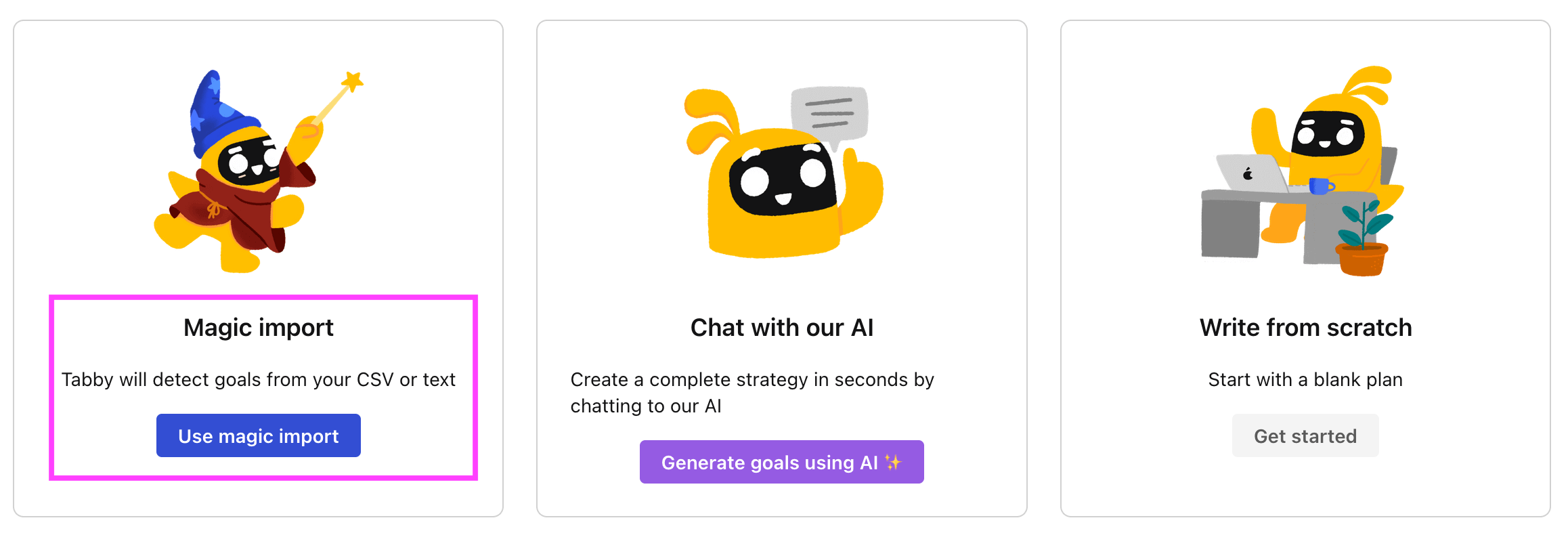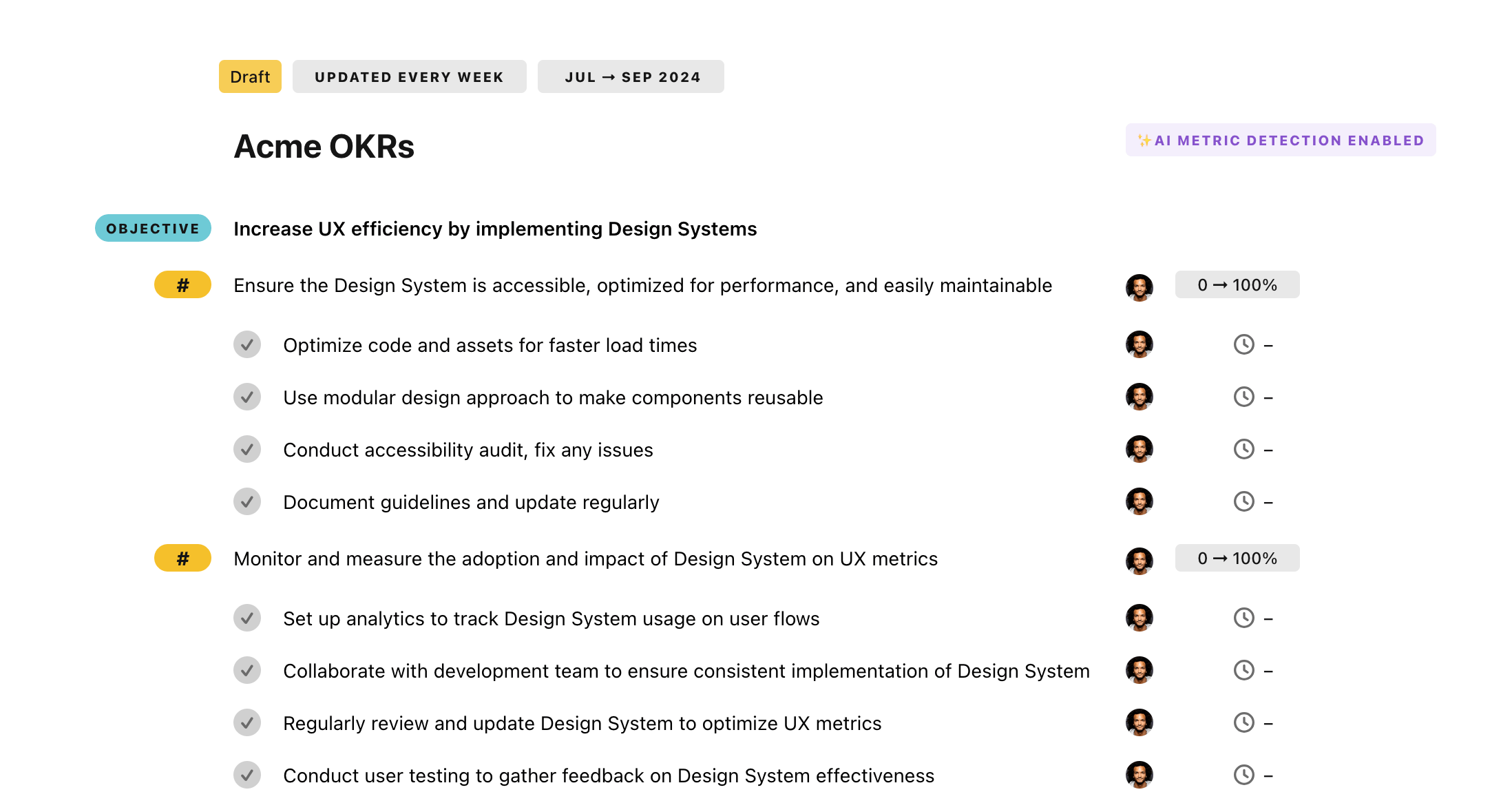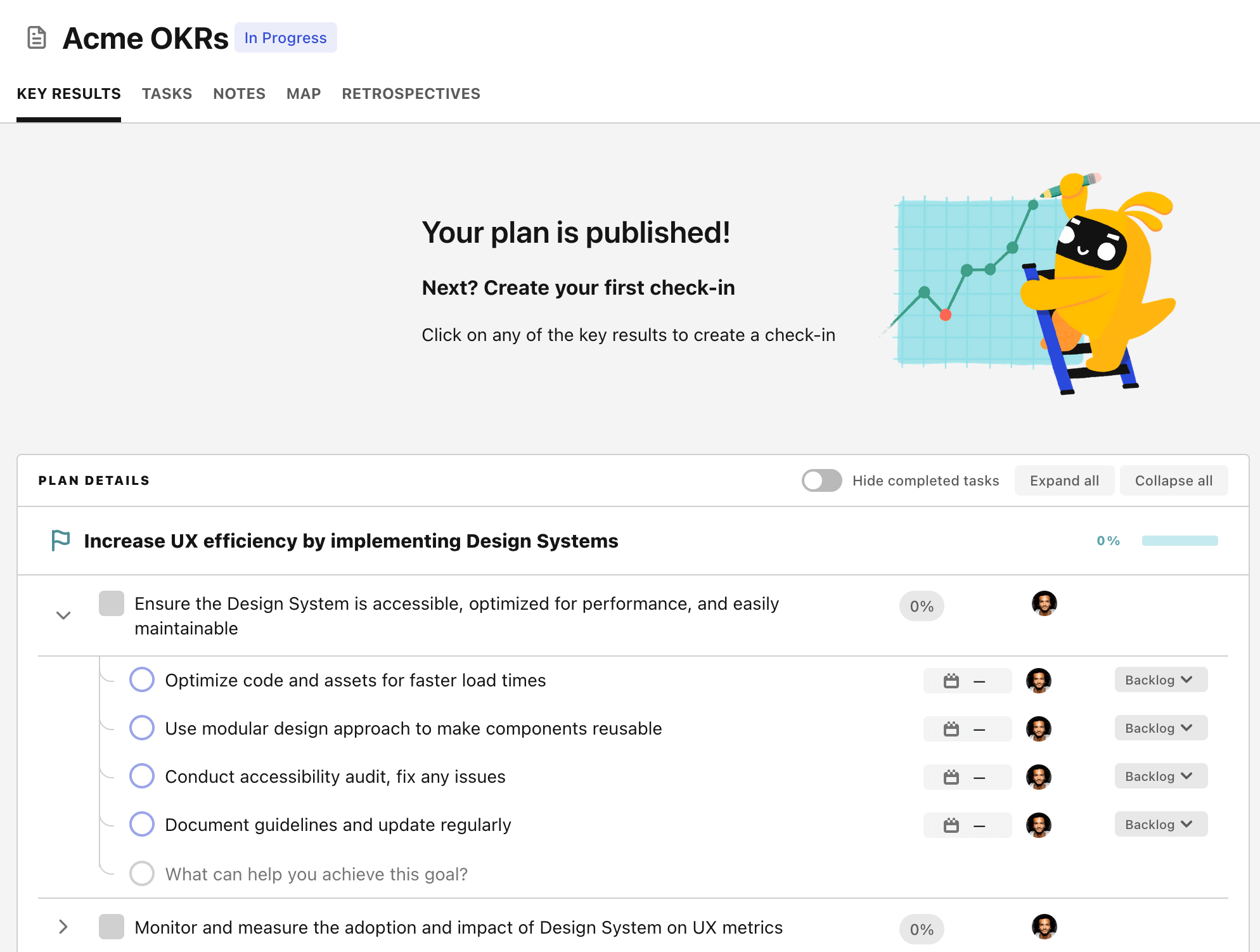OKR template to ensure 90% reduction in ATM power fluctuation
Your OKR template
A second outcome to support this main objective is to install high-quality power stabilizers in 100% of the ATM machines. This process includes coordinating with technicians responsible for the installation, supervising and ensuring that all installations have been done, and acquiring the correct power stabilizers for this role.
The third component of the OKR revolves around increasing the competencies of ATM technicians. They all should acquire effective power fluctuation management skills by the end of the quarter. The process starts with identifying the technicians in need of this training, conducting it, and adjusting their schedules accordingly.
In summary, this OKR is crafted to reduce power fluctuations in ATMs drastically. The initiatives provide a comprehensive approach that factors in regular maintenance, upgrading ATM machinery, and enhancing technicians' skills. This will ensure ATMs remain functional and reliable for users at all times.
ObjectiveEnsure 90% reduction in ATM power fluctuation
KRConduct thorough maintenance checks on 100% of ATMs every two weeks
Prepare detailed checklists for maintenance checks
Schedule bi-weekly checks for all ATM machines
Train staff on conducting thorough ATM audits
KRInstall high-quality power stabilizers in 100% of the ATM machines
Coordinate with technicians for installation in every ATM
Supervise and verify completion of installations
Purchase high-quality power stabilizers for ATM machines
KRTrain all ATM technicians on effective power fluctuation management by end of quarter
Identify all ATM technicians requiring power fluctuation training
Conduct the power fluctuation management training
Schedule required training sessions before the deadline
How to edit and track OKRs with Tability
You'll probably want to edit the examples in this post, and Tability is the perfect tool for it.
Tability is an AI-powered platform that helps teams set better goals, monitor execution, and get help to achieve their objectives faster.
With Tability you can:
- Use AI to draft a complete set of OKRs in seconds
- Connect your OKRs and team goals to your project
- Automate reporting with integrations and built-in dashboard
Instead of having to copy the content of the OKR examples in a doc or spreadsheet, you can use Tability’s magic importer to start using any of the examples in this page.
The import process can be done in seconds, allowing you to edit OKRs directly in a platform that knows how to manage and track goals.
Step 1. Sign up for a free Tability account
Go tohttps://tability.app/signup and create your account (it's free!)
Step 2. Create a plan
Follow the steps after your onboarding to create your first plan, you should get to a page that looks like the picture below.

Step 3. Use the magic importer
Click on Use magic import to open up the Magic Import modal.
Now, go back to the OKR examples, and click on Copy on the example that you’d like to use.

Paste the content in the text import section. Don’t worry about the formatting, Tability’s AI will be able to parse it!

Now, just click on Import from text and let the magic happen.

Once your example is in the plan editor, you will be able to:
- Edit the objectives, key results, and tasks
- Click on the target 0 → 100% to set better target
- Use the tips and the AI to refine your goals
Step 4. Publish your plan
Once you’re done editing, you can publish your plan to switch to the goal-tracking mode.

From there you will have access to all the features that will help you and your team save hours with OKR reporting.
- 10+ built-in dashboards to visualise progress on your goals
- Weekly reminders, data connectors, and smart notifications
- 9 views to map OKRs to strategic projects
- Strategy map to align teams at scale